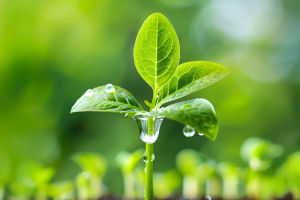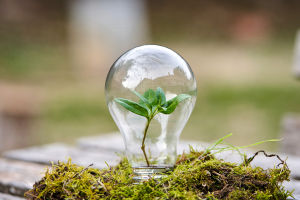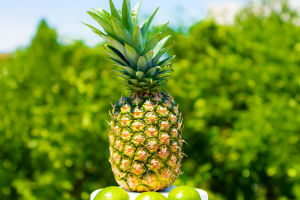Growing up in a cold region, I never saw bamboo like it is in the southern parts of China. In my hometown, bamboo was rare and often small and yellowish.
So, when I first laid eyes on towering bamboo in Yaan, Sichuan, I felt an unexplainable sense of joy. Looking back, I think I was completely stunned by this “grass” that looked more like a tree.
The Structure of Bamboo
Bamboo, with its grass-like appearance, looks very similar to plants like rice or wheat—thin, with distinct segments and sharp, papery leaves. Interestingly, bamboo belongs to the grass family, Poaceae, which includes thousands of species of grasses. But bamboo is different from most grasses because it's much taller and has woody stems, classifying it in a subfamily called Bambusoideae.
There are nearly 800 species of bamboo native to East Asia, forming a large and diverse group. However, when we talk about bamboo, we're usually referring to the tall, tree-like varieties, which stand apart from the smaller, more grass-like species within the same group.
The Giant Bamboo
The most iconic bamboo species and the one closest to human use is the giant bamboo, known as Phyllostachys edulis. In Japan and Taiwan, it's often called "Muzong bamboo," a name that comes from the story of Mengzong in the Twenty-Four Filial Exemplars, who is famous for crying until bamboo shoots sprouted.
This giant bamboo is so tall and thick that it hardly resembles any grass we know. It has a strong, woody-like structure, perfect for making tools and supports. Its strength and durability have made it essential in many cultures, especially in East Asia.
Why Bamboo is Not a Tree
Despite its resemblance to trees, bamboo is not quite like other wood plants. While it lives for many years and grows tall, it doesn't form annual growth rings like a tree does. Bamboo doesn't grow thicker over time like regular trees; instead, it grows quickly, and after reaching its full height, it stays the same size for the rest of its life.
What we see above ground is just a part of the bamboo plant—the "side branches." The true bamboo plant's "roots" are actually underground stems called rhizomes, which are rarely visible.
Types of Bamboo Rhizomes
Bamboo can be classified based on its underground stems into three types:
1. Monopodial Bamboo: The rhizomes spread horizontally underground, with new shoots only emerging from side buds along the rhizome. This is the case for species like the giant bamboo.
2. Sympodial Bamboo: The rhizome sends up new shoots directly from the top bud, which then grows into bamboo poles.
3. Mixed-Type Bamboo: This type of bamboo can grow both in length and produce new shoots from the rhizome, a flexible growing pattern.
The Resilience of Bamboo
One common saying that relates to bamboo is “bamboo and cypress have different hearts,” which comes from ancient Chinese literature. While bamboo looks like wood, its structure is actually different from that of trees like cypress. Bamboo has evolved differently within the grass family, adapting to environmental changes throughout history.
Bamboo's hollow stems are an interesting feature that makes it lighter yet stronger than most other plants. The hollow structure allows bamboo to bend without breaking, making it incredibly resilient in strong winds.
The Incredible Growth of Bamboo Shoots
Bamboo's rapid growth is legendary, especially when it comes to its shoots, which appear after a rainstorm. The young bamboo shoot, or "spring bamboo," is tender and full of water but slightly coarser than the winter bamboo. Spring bamboo grows incredibly fast, sometimes as much as half a meter in one day, making it one of the fastest-growing plants on Earth.
These shoots emerge from the ground after winter, first as dormant buds that remain underground before bursting into life during the spring. After the rainy season, the bamboo can grow from a small shoot to a towering bamboo stalk in just a few weeks.
Bamboo in Our Lives
Despite growing up without bamboo around, I've always been connected to it. In the summer, we use bamboo mats to keep cool, and bamboo fans are a must for warm weather. At the dinner table, we rely on bamboo chopsticks, and bamboo baskets are a staple for carrying groceries. Bamboo furniture, like stools and chairs, is also common in our homes.
We even use bamboo in celebrations. Though firecrackers today are made from paper, in ancient times, people used bamboo tubes filled with explosive powder. When heated, the bamboo would split open, creating a loud crash.
From Forests to Everyday Use
The tallest and most famous type of bamboo in China is the southern bamboo, found in regions like Yibin, Sichuan. This bamboo is known for its height and strength. However, while bamboo forests are beautiful, they can be deceptive. Bamboo can release toxins that prevent other plants from growing, creating a green desert filled only with bamboo.
But in human cultivation, bamboo has taken many forms. Some species of bamboo have been bred for ornamental purposes, like the patterned turtle-shell bamboo. Other varieties have square stems, like the famous "square bamboo," which is not only decorative but also has functional uses.
Final Thoughts for Lykkers
Bamboo is a truly unique and fascinating plant, one that has managed to carve out a space in cultures around the world. Whether it's growing rapidly in the wild or being used in our homes, bamboo continues to surprise us with its strength, versatility, and rapid growth. So, the next time you see a bamboo shoot popping up from the ground, just remember how much more this plant has to offer!


